ALAN GALBRAITH June 08, 2022 All Feature Vehicles
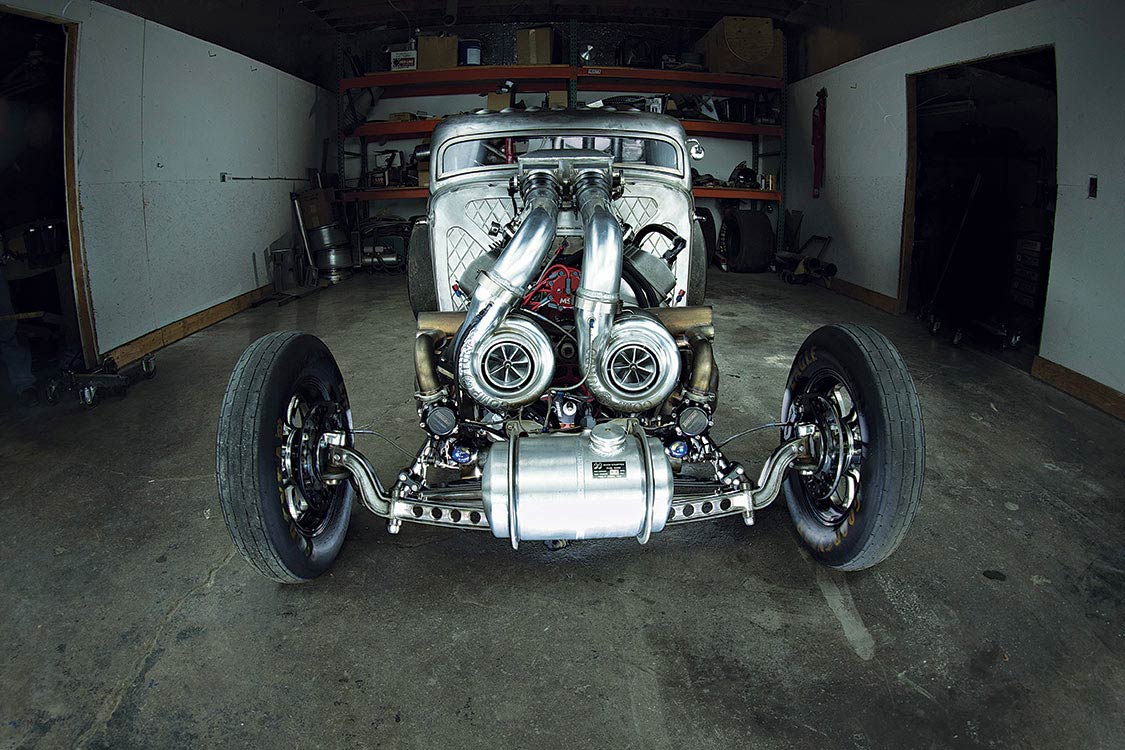
When Rich Fiechter started talking about his latest project with Ed Umland of Eddies Chop Shop in Orangevale, California, the idea was to build a mild 1934 Hot Rod that Fiechter could take to the coffee shop on Sunday mornings without scaring the neighbors. But by the time the project was done, Fiechter’s 1934 Ford three-window coupe would end up capable of putting out over 2500 bhp and running mid-7-second quarter miles. Even at that, Fiechter still drives it to the coffee shop on Sunday mornings, though his neighbors are more than a little scared of the car.
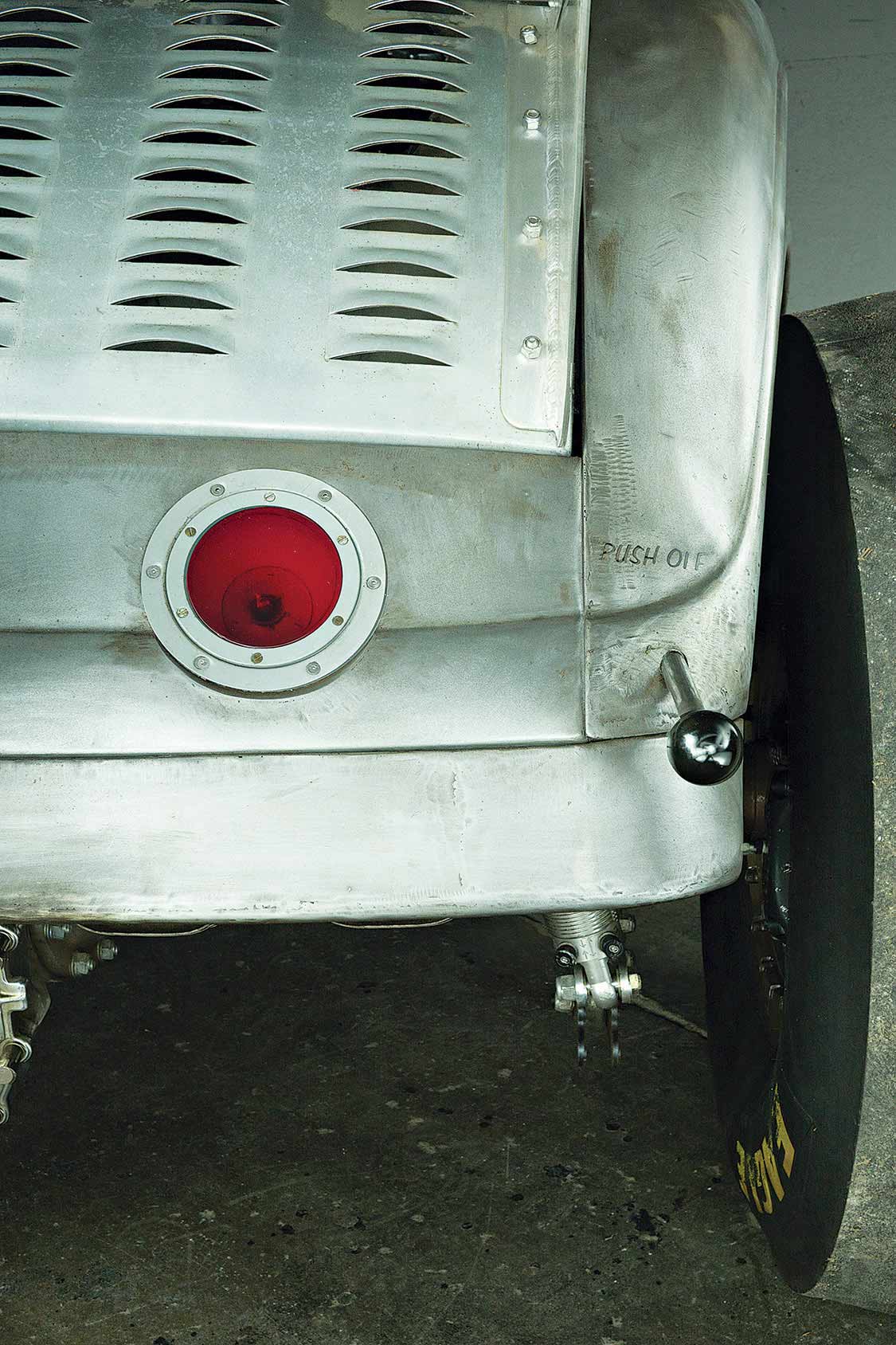
Fiechter is a drag racer from way back, having run Super Comp and Super Gas cars in NHRA’s Division 7, so he enjoys blasting through the timing lights as much as cruising the boulevard. When he got the idea to build a 1934, he wanted a car that could do both comfortably. Fiechter approached Umland with the idea and they sourced an abandoned project from one of Umland’s other customers to start the build. Fiechter originally wanted the 1934 to easily clock 9-sec. quarter-mile times. The more Fiechter and Umland talked about the project, the faster Fiechter wanted the car to go, but still remain streetable. Eventually Fiechter decided he wanted to run in the mid-7s in the A/Gas class at the track. Those discussions and the problems and solutions they created dictated the kind of car that Fiechter would drive out of the shop when it was all done.

First thing on the agenda was to nail down what type of engine would make the power needed to solve the time slip versus street driving conundrum. When Umland and Fiechter started talking, the time slip goal in the mid-9s could be met with a blown big-block, but as the target times dropped Umland consulted with Motor Machine in Carmichael, Calif-ornia, to come up with the right powerplant.
The blower concept was scrapped in favor of a big-block turbo engine. Using turbos allows for a low-compression motor that can run on pump gas when just putting around town at low rpm. At those speeds the turbos practically freewheel, giving the set up a very streetable driving characteristic. At the track with the octane, boost and rpm’s turned up, the setup can deliver the power needed to meet the ¼-mile time requirement. Motor Machine built a 598 Big-Block Chevy running 9.5:1 compression with Big Chief CNC-ported heads using some very large valves and spec’d a pair of 88-mm Comp Turbos. The traditional hot-rod grille shell was scrapped so that the turbos could be positioned at the very front of the car to take advantage of the uninterrupted airflow.
Once the car was all together, the plan was to give it some shake-down miles and passes before blowing it apart and sending it off for paint, but the bare look hit a chord with onlookers and Fiechter alike..
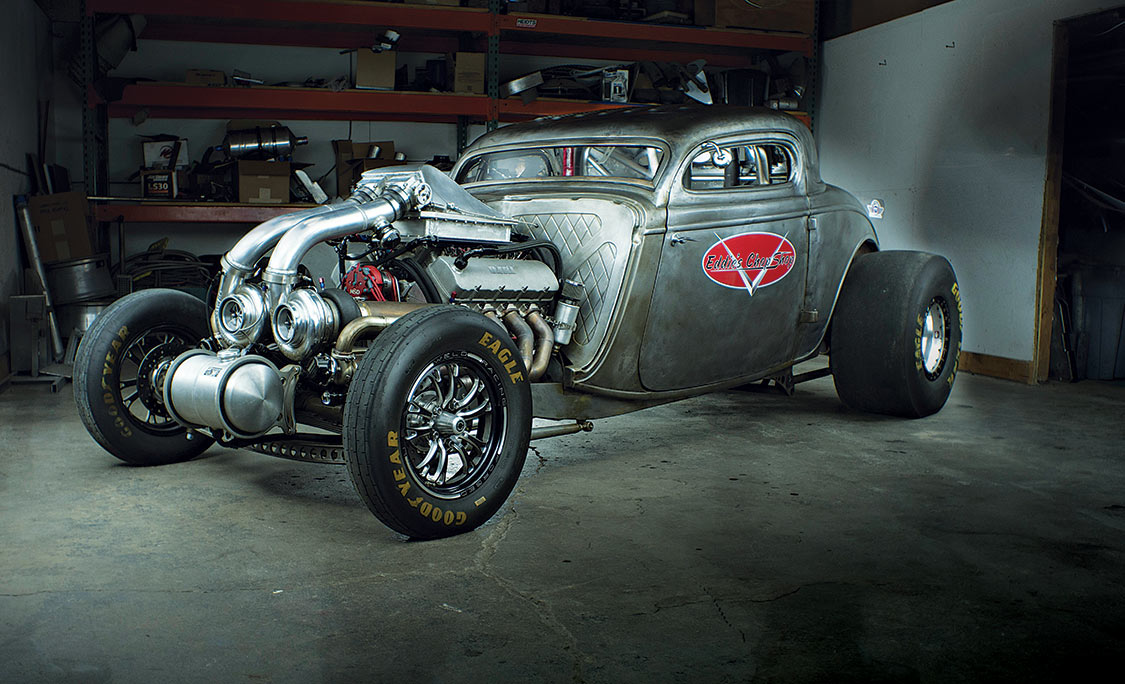
Once the turbos and motor were in place Umland set about fabricating up the plumbing needed to feed the massive mill. Headers, waste tubes, intake runners, intercooler and plenum soon adorned the front of the 1934. Keeping it somewhat traditional looking, a Moon tank caps off the front end and serves to feed ice water to the intercooler for high HP runs. All this hardware up front meant that the radiator had to go to the back. Fed by an electric water pump and hidden under a louvered trunklid, the aluminum unit provides more than enough cooling for extended street cruising or fast passes at the strip.
With the airflow to the engine in place Umland mounted an Aeromotive belt drive fuel pump and regulator fed by 5/8-in. fuel line from the tank in the back. Two 120-lb. injectors per cylinder were fitted to keep up with the airflow from the turbos. A Mallory dual sync trigger in the distributor hole drives the oil pump and sends the crank trigger and cam position signal to a fast electronic controller that keeps all the fire, fuel and air going to the engine in the right proportions.

Even with the over-the-top turbo motor exposed for all to see, Fiechter wanted to keep the coupe looking somewhat like a traditional hot rod so Umland fitted a 4-in. drilled drop axle with transverse leaf spring held in place with drilled and sleeved split wishbones. The shocks had to be laid down parallel to the frame to clear the engine, so Umland fabbed up a bell crank system to help dampen the front end.
The target time of 7.50 was reached partially due to safety regulations interfering with aesthetics. Any faster than that and the stock frame rails, which help retain some of the car’s traditional hot rod feel, would have to be replaced with a full tube chassis. As it is, the chassis from the back edge of the doors rearward, which can’t be seen from the outside, is a full tube section with an Alston Chassis works 4-link with Varishocks holding the Winters quick-change rear end in place. A tubular crossmember braces up the center and positions the PowerGlide 2-speed transmission behind the massive motor. Connecting the car to the pavement are Goodyear Drag radials and Front Runners mounted on Weld wheels.
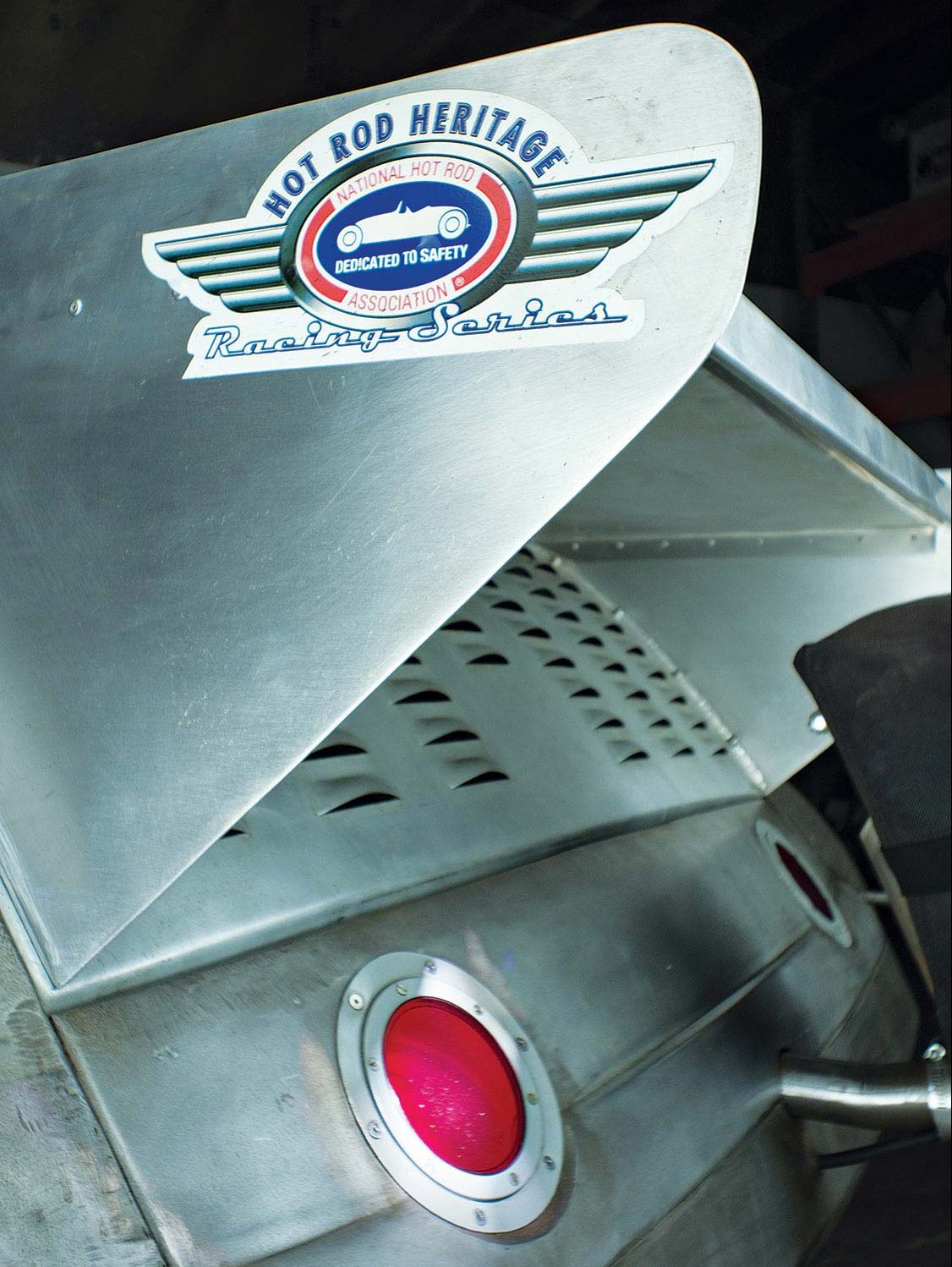
When it came to the outward appearance of the car, Fiechter trusted Umland’s style, which is evident in the quilted sheet metal of the firewall, dash and door panels. The bare metal custom fabrication look carries over to even the smallest details such as the tach mounting pod. Umland fabricated it from various pieces of aluminum stock to look like a cast fixture.
Fiechter wanted to be able to raise and lower the windows quickly and easily when racing or cruising in the warm California summer so Umland made a Linko-themed window crank that actuates the Lexan windows. Two large metal levers in the door ride on one pivot. The big lever puts the window up and down in one throw via a bell crank, while the smaller lever is the door handle. Custom-made racing seats and an engine-turned dash accent the Spartan yet very functional interior. A 7.50 spec roll cage helps protect Fiechter as he drives, and also stiffens up the chassis.
Once the car was all together, the plan was to give it some shake-down miles and passes before blowing it apart and sending it off for paint, but the bare look hit a chord with onlookers and Fiechter alike. Besides, Fiechter is having too much fun driving and racing it to take it out of service just yet.
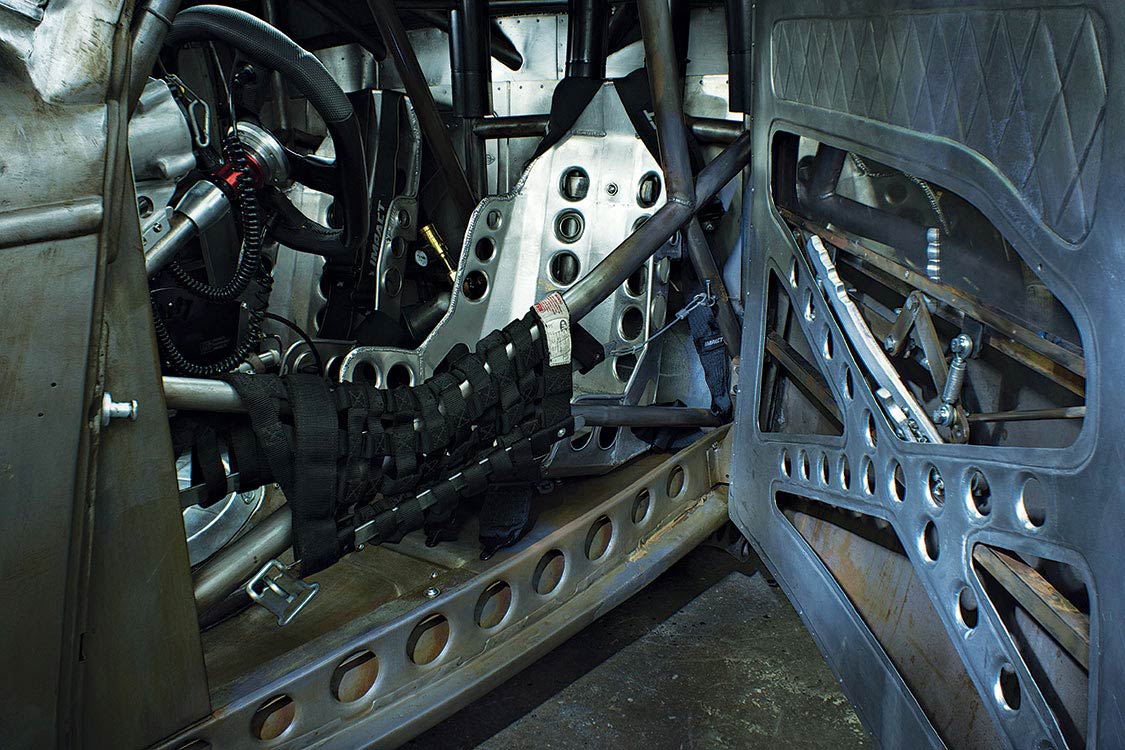
At the strip, Fiechter has been running the car faster and faster. At 14 lb. of boost, the setup runs in the mid-8s. Crank it up to 18 lb. and dump in some 116-octane fuel and the times dip into the 7s. The car was dynoed at 1240 bhp at the rear wheels running 14 lb. of boost on pump gas. Umland estimates the current setup is good for approximately 2500 bhp at a jaw-dropping 30 pounds of boost.
Before Fiechter could get close to the car’s potential on the strip, he had to chase some problems that only surface at high speed. At the big end of the strip, at speeds over 170 mph, a GoPro camera mounted on the wheelie bar revealed the rear end getting light and allowing the tires to haze, so Umland took the car back to the shop and fitted the massive rear wing to keep everything planted at speed. With that in place, so far the best time Fiechter has clocked in the quarter mile is a 7.91-sec. pass.
Rich intends to keep probing the car’s potential on the track and eventually plans to take it to Bonneville to see what it’s really capable of. In the meantime, look for this 1934 Ford cruising near the local coffee shop, despite the nervous glances from Fiechter’s neighbors.